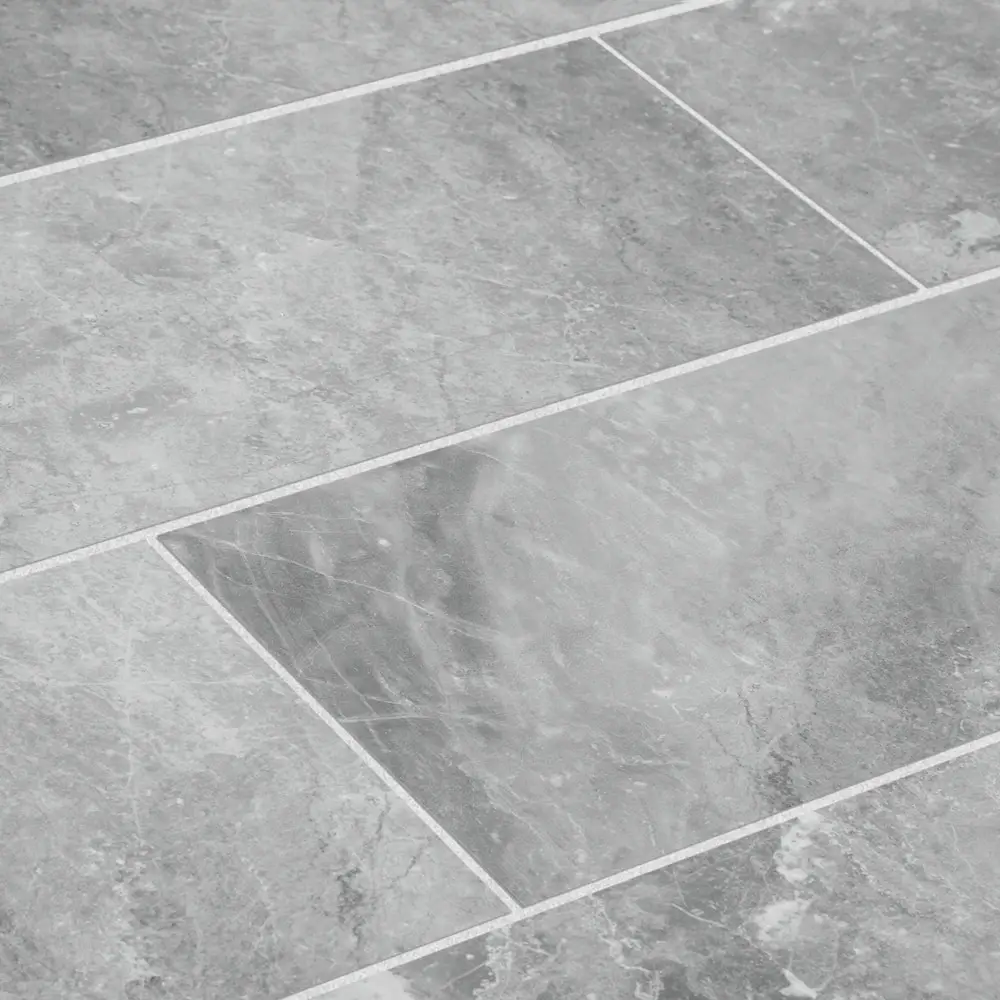Installation Tips and Grout Guidelines, Large-format tiles, such as 12×24 inches, are becoming increasingly popular in modern homes. Apart from the design variety, rectangular tiles can fill up space more efficiently, requiring fewer pieces than smaller tiles.
12×24 tiles are suitable for both walls and floors, and they require fewer grout lines requiring less cleaning and maintenance. They also give any room a contemporary feel and make a tiny place appear larger.
However, what size grout line should you use for a 12×24 tile? A 3/16″ grout line is usually required for a large tile, such as 12×24. However, it would be best to read the manufacturer’s recommendations to see how small you can go.
Table of Contents
How Do You Lay 12×24 Tiles?

Below is a procedure on how to lay 12×24 Tiles:
Avoid Tile Lippage Before Tiling
Installation Tips and Grout Guidelines critical to carefully prepare the surface where you’ll be laying the tiles first to avoid tile lippage in the finished job. This could be caused by an uneven surface, causing the tile to lift or even warp. It could also be because the tiles were not spaced correctly in the layout, or the grout lines and adhesives were not correctly applied.
For a 12×24 tile set, you will need a medium mortar. When compared to the thinset adhesive, this one has a greater consistency. Because a medium bed mortar is made of water, coarse sand, cement, and other compounds, you won’t have any loose tiles when everything dries out.
However, if you wish to use a thinset for porcelain tiles, use the modified version for the best bonding coverage. If you choose a non-modified thinset, you’ll still have to mix it with latex polymer, which will add to the time it takes to complete the project.
Carefully Select the Tile Direction
Rectangular tiles look best in a horizontal orientation with a 1/3 offset tile floor. Its direction is the same as a brick wall’s direction, where the longer side is across the surface. This gives the room a more appealing appearance and makes it appear larger.
It’s best to lay down the tiles the long way, with the longer side laid vertically, in a much smaller space like a bathroom. A long and narrow direction visibly lengthens a tiny space.
Installing the Tiles
Once the subfloor is in place and the tile direction has been determined, you may begin applying the mortar with a 1/2 inch notched trowel and a flat margin trowel. This mortar should be thick enough to allow for easy leveling.
Apply some mortar to the back of the tile as well, as if you were buttering the surface, to help the tile stick to the floor better. Always clean as you go along the tile. You will require faultless performance from this application.
For floors with large format tiles, use sanded grout and 1/4 inch spacers for the grout lines. You might also want to choose a darker grout in high-traffic areas like the kitchen for aesthetic purposes.
Finally, it is best to always use a grout sealer on tiles that are constantly exposed to moisture. However, if you use epoxy-based grout, you can omit this step.
What are the Advantages of Large Floor Tiles?
If your room size allows it, there are various advantages to employing large tiles. For example, have you ever had to spend an entire day cleaning grout lines? Because there are fewer grout lines to clean with large tiles, you will save time cleaning. You will also save money because fewer cleaning products will be purchased. Furthermore, your installation will be more durable. Another aspect to consider is that large size tiles require fewer tiles. This can help you save both time and energy.
How about a long corridor or a rectangular space? You can lengthen these spaces by utilizing huge rectangular tiles, much like you can widen a room by using square tiles.
However, before laying down large format tiles, make sure your floor is level. Smaller tiles can be able to hide an uneven floor. But because large floor tiles slant, this unevenness will be evident. This will not only be unsightly, but it will also be a tripping hazard.
How Do You Know What Size Grout Line to Use?
To know what size grout line to use, consider the size of your tile. A 1/8″ or 1/16″ grout line can be used on a small 3×6 tile, but a 1/8″ grout line would be appropriate for a mid-size tile.
Is it Possible to Utilize Larger Tiles on the Shower Floor?
Thanks to linear drains that blend in with your elegant design, you can choose any size tile on the shower floor. Even the larger size tiles are included in this. The essential thing is to select the tile that best suits your needs in terms of appearance and maintenance.
Is it Better to Have a Lighter or Darker Grout Than the Tile?
If you want to draw attention to the pattern created by your tiles, use a contrasting hue. If you’re attempting to unify your tile, such as with a wood-look tile floor, choose a close match that’s a shade lighter than your tile.
What is the Best Way to Lay Bathroom Tiles?
Straight, even rows of tiles tend to attract the eye along those lines. If a room is small, this elongates it even more, making it appear longer and narrower than it is. Installing the tiles on the diagonal will solve the problem.
What Size Tile Should You Use on a Shower Floor?
Below are the recommended sizes for shower floors:
- Small bathroom floor: 1-inch square tiles
- Small bathroom wall: 1 to 4-inch square tiles
- Moderate or large bathroom floor: 1 to 12-inch square, or up to large format tiles
- Medium or large bathroom walls: 4 to 15 inch by 20-inch tiles
How Do You Choose a Shower Floor Tile?
Below are some of the things you should consider when selecting a shower floor tile:
- Consider the overall design of the bathroom and which shower tile will compliment it.
- Choose a tile that goes well with the bathroom’s overall design.
- Consider the color scheme of the ceiling and walls to determine if the shower tile should be bold or neutral.
Grout size for 12×24 tile
Large tiles, such as the 12×24 size, usually require 3/16-inch grout lines. However, it would be wise to check with the tile manufacturer for its recommendations about how small a grout line you can have and still achieve full adhesion.
Remember that using small grout lines will increase the time required to complete an installation. If you don’t do it right, you can cause an unsightly lippage around the edge of your tile.
Grout size for 12×24 shower wall tile

The best grout size for a 12×24 shower wall tile is 1/8 or 3/16″. This is a good size because it will not show up too much if there are imperfections in your tile installation. If you want to hide imperfections, even more, use 1/16″ grout lines on your 12×24 shower wall tile.
Grout spacing for 12×24 wall tile
Tile spacers typically come in 1/16, 1/8, 3/16, and ¼ inches.
The rule of thumb is to use the smallest size that will allow the tiles to be placed flush against each other. For example, if you have a 1/8-inch grout joint and you want to use ¼-inch spacers, it won’t work because the larger spacer will leave a gap between your tiles.
Grout line guidelines for 12×24 tile
- The grout lines should be 1/8″ thick or less.
- Consider using different color grouts for different areas of your project. This will help tie everything together and add visual interest without being too distracting or overwhelming.
What pattern should I lay 12×24 tile?
You can lay 12×24 tile in a variety of patterns. The most popular is a brick layout. You can lay this pattern using only two rows of grout lines per tile, but it does require some extra work when cleaning and maintaining your floor.
Another popular pattern is a herringbone pattern. This requires just one row of grout lines per tile and is the easiest to clean.
Lastly, you can also use an alternating grid layout with 12×24 tile. This pattern also uses two rows of grout lines per tile, but there are two colors used in each row instead of one color throughout the entire row.
Should you stagger 12×24 tile?
Staggering the tiles is a good idea if you want the floor to look as if it were made from one large tile. This can make the floor appear larger than it actually is. It can also give the room a more open feeling, which is another plus for people who are going for that rustic, Western feel.
Some types of tiles, such as porcelain or natural stone, are easier to stagger than others.
Installation Tips and Grout Guidelines thinking about staggering your tiles, Installation Tips and Grout Guidelines important to consider how many tiles you’ll be laying per square foot.
How thick is Thinset for 12×24 tile?
Thinset is a mortar that you apply to the floor prior to installing tile. It provides the needed bonding surface for the tile to sit on, as well as some cushioning against foot traffic. The exact thickness of thinset depends on the type of tile, how it’s installed, and the notch size of the trowel you use.
Thinset mortar is usually spread about 3/16-inch to 1/8 inch thick under the tiles.
Are Smaller Grout Lines Better?
There is no right answer to this question because it depends on what kind of look you’re going for and how much time you have to work with.
Installation Tips and Grout Guidelines want a clean, modern look and don’t mind spending hours cleaning up after yourself, then extra small grout lines can help enhance this effect by making your tiles appear seamless and uniform.
Smaller grout lines also make cleaning easier because there is less space for dirt to hide.


